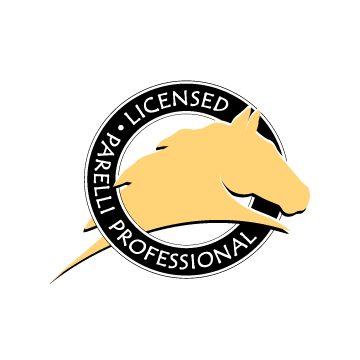Have you ever left the barn to take your horse out for a ride or to play with in a new place and 10 minutes later he's spooking, jigging, and prancing about? Or perhaps he gets slower and slower and eventually won't go forward, then when he does he explodes soon after?
What you're experiencing is your horse blowing by threshold after threshold until he can't manage to stay calm, confident, and connected to you. Not only does this cause him to give you zero points for leadership, it can also be a huge safety issue!
Think of a threshold as a line on the ground that your horse is not 100% sure he will survive if he steps over. It may start out as a slow decline in confidence, however the more lines you cross that your horse deems dangerous can quickly cause him to become unsafe, unwilling, and unmanageable.
Any Horsenality, confident or un-confident, can experience coming to a threshold. Often times it is only a moments hesitation for an extrovert before they blow by it because they can't stop their own feet. For an introvert it can be them slowing way down, holding their breath, or stopping and refusing to go forward.
Regardless of how your horse tells you he's come to a threshold, where he won't feel safe one step beyond this imaginary line, it is up to you to recognize and honor this for your horse.
Retreating a few steps back to where he has confidence and waiting for him to release his tension and fear before proceeding will prove to him you are a leader he can count on to keep him safe. It shows him that you'd never push him off the edge of the cliff he feels he has come to when he hits that threshold and can't go on.
By being aware of the first hesitation or tension you feel in your horse and addressing it at that moment you are helping extinguish a spark before it turns into a raging fire.
The sooner you notice the reaction, the less you have to do for your horse to feel confident.
Remember, as we seek relaxation while riding it is important to account for the horse's confidence every step of the way!
If you enjoy these blog posts don't forget to subscribe to my blog or like my facebook page to see more from me!



